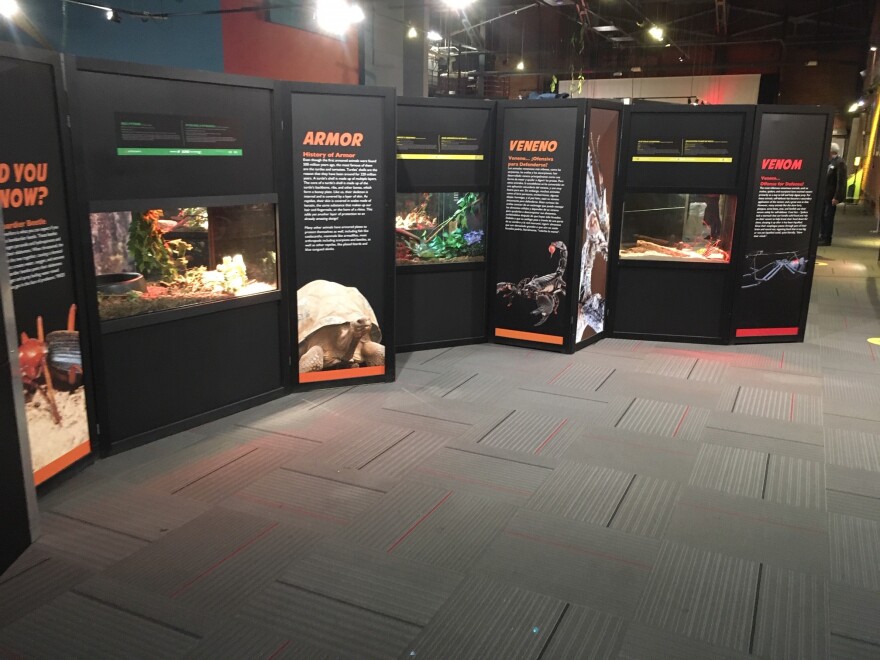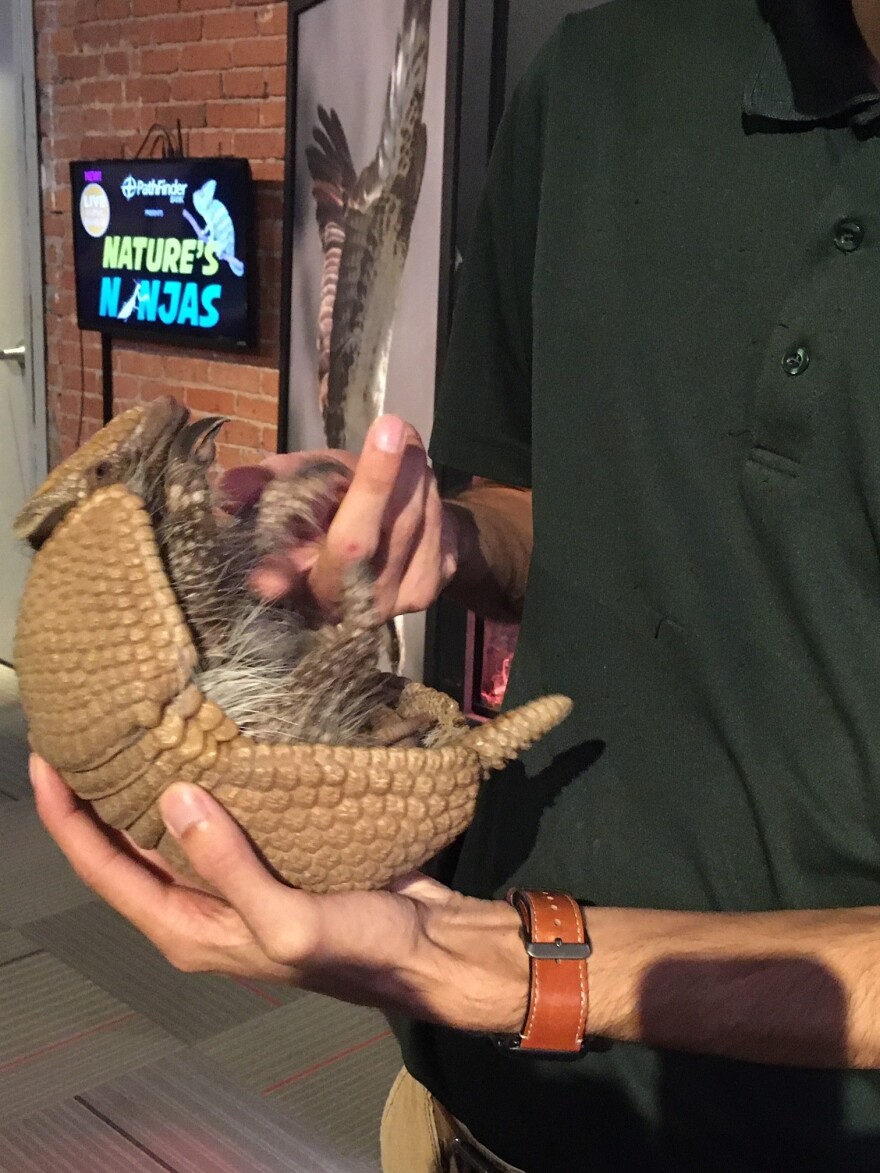You wouldn’t think a red footed tortoise, porcupine, boa constrictor, and other animals would be found in a science museum. But now through mid-March, a more than two dozen animals will be on display at the Museum of Science and Technology as part of a visiting exhibit called "Natures Ninjas."
Experts will have the animals out for casual visits and live shows.

President of the MOST Lauren Kochian says they weren’t really planning on bringing in an exhibit this year so they could focus on renovations. But then the pandemic hit, and they realized they needed something new and exciting when they were able to reopen. She says nature’s ninjas was one of the few low-touch, lower risk exhibits available that fit their space and mission.
"It really isn't like what you'd see at a zoo because it's all based in the same theme of animal adaptation. Kids will be learning and not even know they're learning about genetics, about adaptation, about the environment that shapes that adaptation. There's a lot of fun science that goes along with it."
Kochian says staff from Little Rays Nature Center will fully staff the exhibit when doing live shows in the IMAX theater or just hanging out with the animals near their habitats.
I caught up with one of the handlers who was holding a small, armored, wiggling creature in his hand.
"This is Brazilian Three-Banded Armadillo. His name is Spalding. They're one of the few that can actually curl up into a ball. There are Nine-Banded Armadillos in Texas, Florida, the southern states. They're much bigger, but they can't fold into a ball. He's quite small."
Kochian hopes the unique exhibit generates some excitement and boosts attendance, which she says has been rising slowly but steadily since they reopened in August. Meanwhile, Kochian they’ve adjusted their education programming to meet the new demand created by hybrid learning. Children ages 4 to 12 can be dropped off at the MoST during their remote learning days.
"We will take care of their distance learning, their Google Classrooms, all of that with them during the day. They also get, not just child care, but science education child care. It's really a great opportunity to get your student off the dining room table for a day doing their distance learning in a different environment."

There is a fee, and Kochian says they’re nearly sold out. Summer camps were also full, which she says all helps keep some revenue flowing.
"Even in the absence of admissions revenue, we have this different programming revenue that started with the summer camps in July and has continued. It's not near what the normal admissions revenue would be, but it's better than nothing, so we're very grateful for that."
Kochian says they’re also grateful for donations from those who might have a refreshed understanding of science education. Still, she says they’ve had to reduce payroll by 30 percent, which includes furloughs, and cuts in hours and wages. Kochian says they’re slowly bringing people back as the budget allows.









